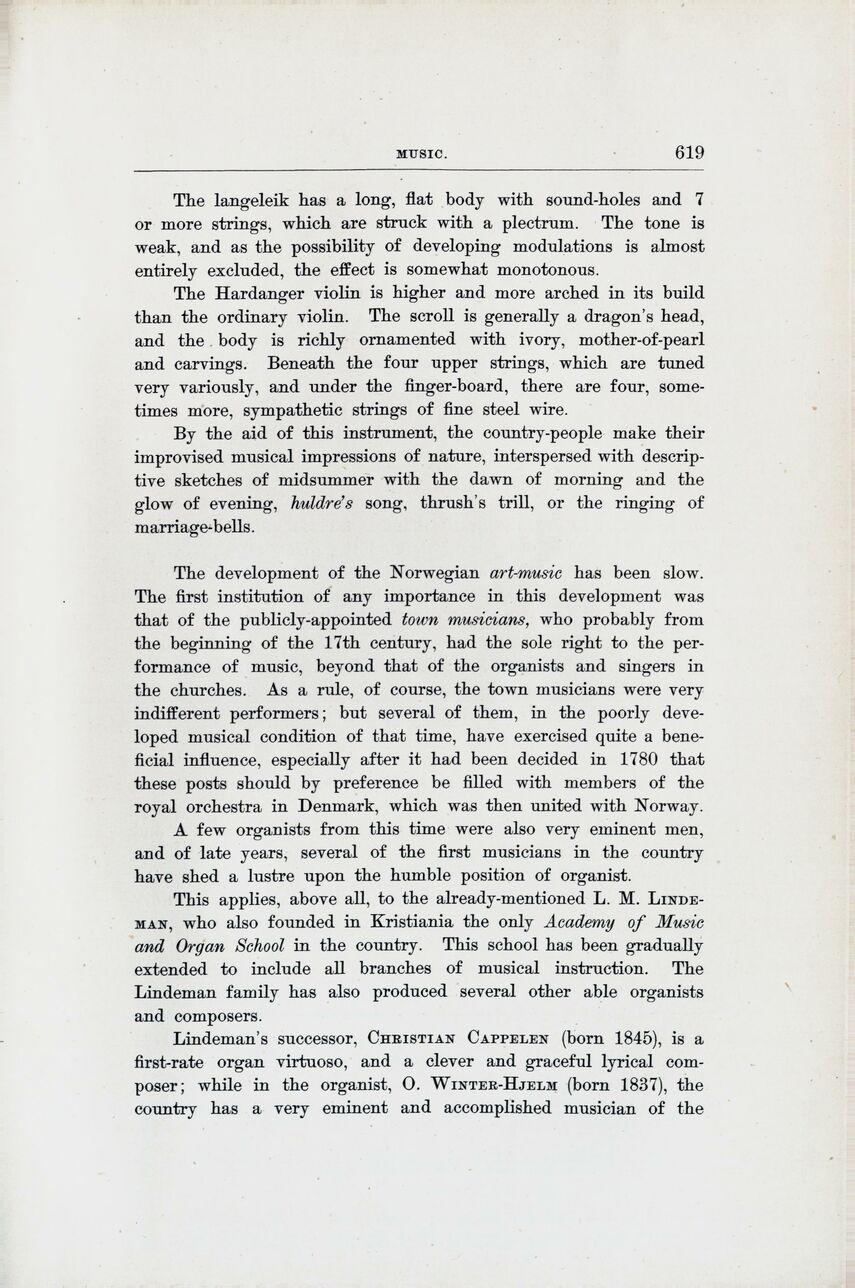
Full resolution (JPEG) - On this page / på denna sida - Music, by V. H. Siewers

<< prev. page << föreg. sida << >> nästa sida >> next page >>
Below is the raw OCR text
from the above scanned image.
Do you see an error? Proofread the page now!
Här nedan syns maskintolkade texten från faksimilbilden ovan.
Ser du något fel? Korrekturläs sidan nu!
This page has been proofread at least once.
(diff)
(history)
Denna sida har korrekturlästs minst en gång.
(skillnad)
(historik)
The langeleik has a long, flat body with sound-holes and 7
or more strings, which are struck with a plectrum. The tone is
weak, and as the possibility of developing modulations is almost
entirely excluded, the effect is somewhat monotonous.
The Hardanger violin is higher and more arched in its build
than the ordinary violin. The scroll is generally a dragon’s head,
and the body is richly ornamented with ivory, mother-of-pearl
and carvings. Beneath the four upper strings, which are tuned
very variously, and under the finger-board, there are four,
sometimes more, sympathetic strings of fine steel wire.
By the aid of this instrument, the country-people make their
improvised musical impressions of nature, interspersed with
descriptive sketches of midsummer with the dawn of morning and the
glow of evening, huldre’s song, thrush’s trill, or the ringing of
marriage-bells.
The development of the Norwegian art-music has been slow.
The first institution of any importance in this development was
that of the publicly-appointed town musicians, who probably from
the beginning of the 17th century, had the sole right to the
performance of music, beyond that of the organists and singers in
the churches. As a rule, of course, the town musicians were very
indifferent performers; but several of them, in the poorly
developed musical condition of that time, have exercised quite a
beneficial influence, especially after it had been decided in 1780 that
these posts should by preference be filled with members of the
royal orchestra in Denmark, which was then united with Norway.
A few organists from this time were also very eminent men,
and of late years, several of the first musicians in the country
have shed a lustre upon the humble position of organist.
This applies, above all, to the already-mentioned L. M.
Lindeman, who also founded in Kristiania the only Academy of Music
and Organ School in the country. This school has been gradually
extended to include all branches of musical instruction. The
Lindeman family has also produced several other able organists
and composers.
Lindeman’s successor. Christian Cappelen (born 1845), is a
first-rate organ virtuoso, and a clever and graceful lyrical
composer; while in the organist, O. Winter-Hjelm (born 1837), the
country has a very eminent and accomplished musician of the
<< prev. page << föreg. sida << >> nästa sida >> next page >>